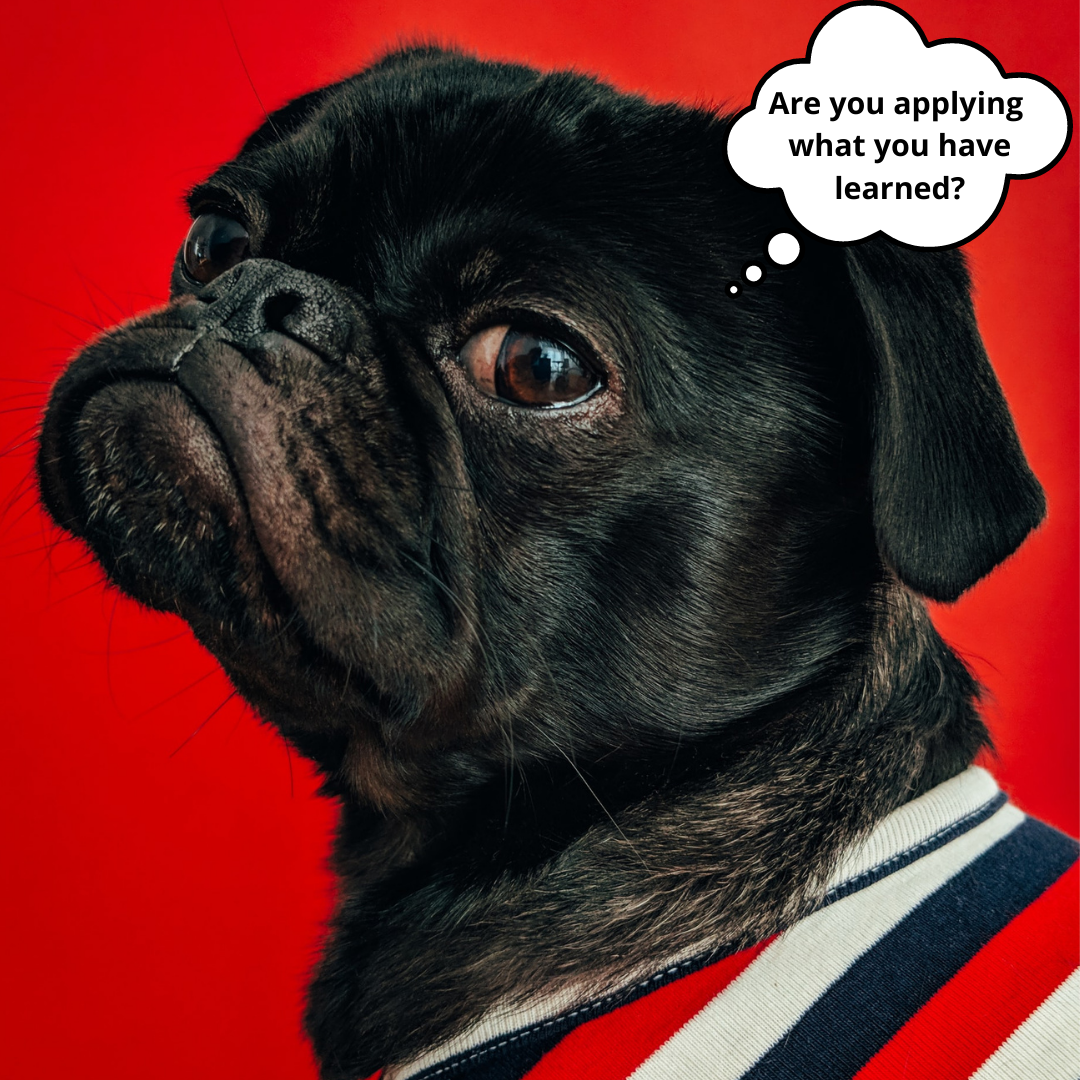How to use trial and success learning to our own behaviour?
Many times we don’t even bother trying to learn a new skill. We convince ourselves that it’s not for us. When what we could do is to find the first successive approximation and start learning through a fun and successful process.
Controversial advice - Reinforce unwanted behaviour
Many of the problem behaviours are a product of unintentional reinforcement that comes at the wrong time. It's better to reinforce quickly to keep the behaviour short and put more intention into all of the interactions with your dog. Remember, it's not just during a training session that your dog learns!
Are you applying what you have learned?
Creating habits is known to many people. When you hear about it, it sounds so obvious! You might even be able to teach others about it as you have great advice that works. The question is, are you using this advice?
How to create habits with the help of technology?
How many of us failed in the past trying to create a new habit?
This time, I tried something different and I was building on a habit that I already have. Now, after 6 months, I can fairly say that I managed to build a new, solid habit of learning Spanish 20 min a day every day. In the blog, I share what helped me achieve that and few other surprising learning points!
Reinforcing unwanted behaviour and micro-shaping
I'm not afraid of allowing the dog to briefly do things I might later want to change. I know how shaping works and how small a start of a behaviour can be. And when I have a starting point I will continue to micro-shape it until I see the behaviour that is acceptable for everyone (including the dog).
Impulse control vs. trial and success learning
Instead of trying to develop an impulse control inside the animal, I much rather prefer to focus on teaching the essential skills that my dog needs. When you teach all of the skills step by step, you teach by adding successes not by eliminating errors.
How can we use what we learn in dog training to our own behaviour?
From this blog, you can learn steps to train your dog a 'wait' or ‘stay’ cue but also how you can transfer/use what you learn to enhance your learning and to get better at creating new habits for yourself.
How trying a vegan diet helped me overcome my negative self-talk
Behaviour principles can be applied across the species. From animal training to personal development. Changing my behaviour changed the way I talk to myself. It can be applied to any new skill you would like to learn, I applied it to changing my diet. I’ve done it, you can do it too.
We are all individuals
Animals just as much as humans are individuals with their own set of preferences and biases. What works for one will have no effect on the other. We can influence a positive change in the behaviour of any individual but the approach needs to take the individuality into consideration.
The best way to create habits
Learning takes time. For us, humans and for the animals that we are teaching alike. While working with owners and their dogs, it’s not just the dog that needs to develop a new habit, it’s also the caregiver. When we expect too much from ourselves we can easily get discouraged. If you never used treats with your dog – it’s going to take time for you to build a habit around it. You might not see the change in your dog immediately but have you made the sustainable change in you first? It’s easy to blame the dog but for him creating a new habit can be equally challenging as it is for you.
Why dog is not a wolf in disguise
Dogs had years and years of evolution to become a different species from wolves. I find it unfair for both of the species to keep comparing them according to the leader of the pack belief. I will continue to provide content for everyone who loves to learn more and is not settling on the status quo.











